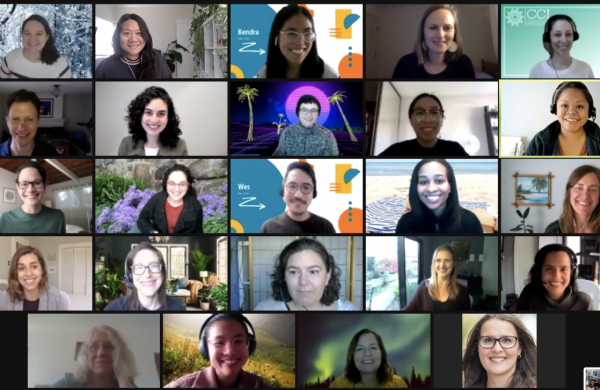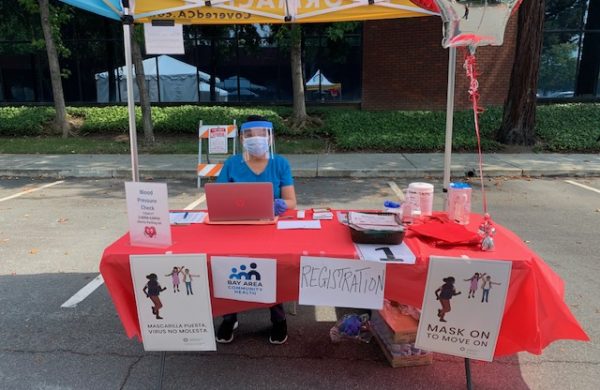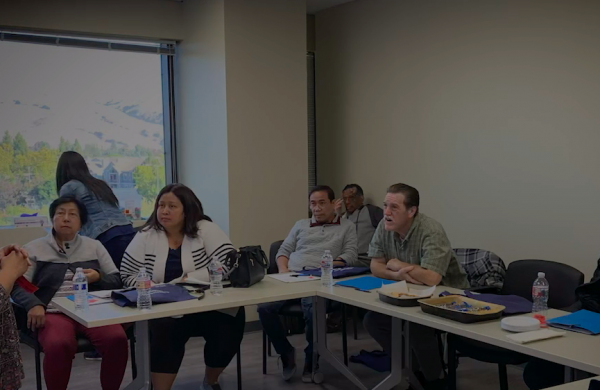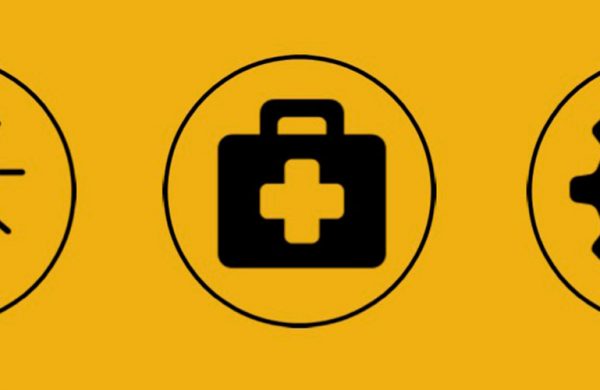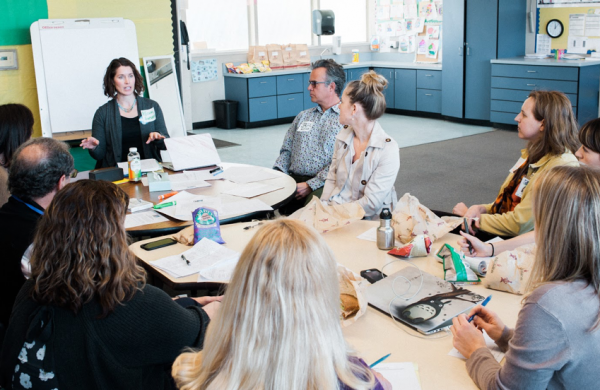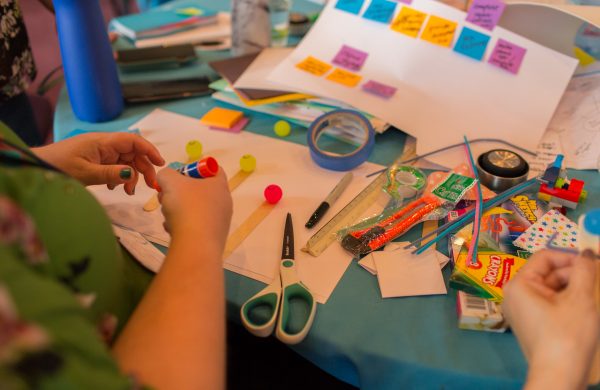During the pandemic, health care organizations have been struggling to find ways to authentically connect with employees and team members remotely. With the explosion of COVID-19 cases, business shutdowns, and soaring unemployment, the everyday question “how are you?” tends to elicit dazed or perfunctory responses. And how many icebreakers have you participated in lately that felt uncomfortable or forced? Like many nonprofits, we found we needed a better way to connect with each other and our health care partners.
[caption id="attachment_26398" align="alignleft" width="587"]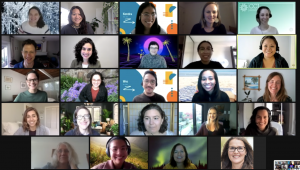 CCI staff preparing for an icebreaker[/caption]
Of course, the search for more authentic connection at work predated the pandemic. Although working remotely is new for many of us, the need for employees and partners to share and co-design in a way that is safe and supportive has always been present. However, conventional work structures “stifle inclusion and engagement,” Keith McCandless and Henri Lipmanowitz of the Social Invention Group have written. They have created what they call “Liberating Structures” – simple microstructures that foster trust and lively participation at work…”and put innovative power once reserved for experts only in the hands of everyone.”
Many nonprofits have worried that during the pandemic, they might lose their “secret sauce” for building trust, cooperation, and innovation in face-to-face convenings. But by incorporating the principles of Liberating Structures and trauma-informed care (along with some fun) into our online breakout rooms, we’ve found you can adapt or design relationship-building activities that do just that. In that spirit, here are some activities to create strong bonds with your partners during the pandemic and beyond.
CCI staff preparing for an icebreaker[/caption]
Of course, the search for more authentic connection at work predated the pandemic. Although working remotely is new for many of us, the need for employees and partners to share and co-design in a way that is safe and supportive has always been present. However, conventional work structures “stifle inclusion and engagement,” Keith McCandless and Henri Lipmanowitz of the Social Invention Group have written. They have created what they call “Liberating Structures” – simple microstructures that foster trust and lively participation at work…”and put innovative power once reserved for experts only in the hands of everyone.”
Many nonprofits have worried that during the pandemic, they might lose their “secret sauce” for building trust, cooperation, and innovation in face-to-face convenings. But by incorporating the principles of Liberating Structures and trauma-informed care (along with some fun) into our online breakout rooms, we’ve found you can adapt or design relationship-building activities that do just that. In that spirit, here are some activities to create strong bonds with your partners during the pandemic and beyond.
10 Activities to Build Trust and Bonding
-
Hardship and hope
Pair up people in Zoom breakout rooms (or on another platform) and ask them to each share one tough moment and one hopeful moment from the last week. This can be a particularly good way of breaking the ice with new partners, since some people have few opportunities to talk about the difficulties they’ve encountered. -
Self-reflection
In Zoom breakout rooms of 3-4 people each, ask participants to share one thing they’ve learned about themselves in the last few weeks or months. -
Virtual show and tell
Ask participants to find one object/photo/memento in their house that inspires them and makes them feel more resilient, then tell the story behind it. This exercise, which focuses attention on the treasured object, can make it easier for introverts to talk freely. -
Three things in common
In a breakout room with one other person, ask them each to give a quick introduction with the goal of finding 3 things they have in common with each other (other than, say, being involved with CCI and living in California). If that doesn’t work, the pair has to quickly ask questions to try to find things in common before the breakout room dissolves. This has been one of our most popular icebreakers. -
Sharing a (virtual) coffee or tea
Pair up people in a breakout room so they can make and drink a cup of coffee or tea together and reflect on any memorable experiences, stories, or traditions they have that are connected to this remarkable beverage. Some prompts to include: What does this drink mean to you? How do you use it in your everyday life? How does it make you feel? -
The Feeling wheel
This activity involves the Google Jamboard app and the Feeling Wheel, developed by Dr. Gloria Willcox and distributed by The Gottman Institute, to make it easier for people to identify and become aware of their feelings. Assign 3-4 people to each breakout room to identify and share emotions they have experienced: -- In the last six months -- Today -- When they think about the outcome of their work [caption id="attachment_26399" align="aligncenter" width="700"]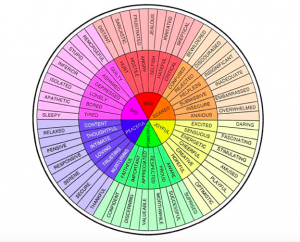 Feelings wheel (Dr. Gloria Wilcox)[/caption]
Feelings wheel (Dr. Gloria Wilcox)[/caption] -
Finding joy
Assign two people to a break-out room and ask them to take turns finding a recent picture on their phone that brings them joy: The catch is that the picture cannot be of a human. Have participants describe the picture and share why it brings them joy or happiness, and – if they are comfortable doing so – show their partner the picture. -
MadLib storytelling
You may have fond memories of MadLibs, a zany template developed by two MAD magazine writers that let kids scramble the words in a story such as “Greetings, Earthlings!” in a satisfyingly ridiculous way. Well, it turns out that MadLibs are amusing for adults, too. In a breakout room with one other person, assign a participant to choose a story template from MadLibs, ask his or her partner for words to fill in a short word chart, then hit “send” to discover how MadLibs scrambles them into a very short story. After reading that story aloud, the other participant will repeat the activity. If there’s time after the partners rejoin everyone else on Zoom, participants may select a story to read to the entire group. (Note: This relationship-building exercise is probably better a few months into a project, since it doesn’t give participants much time to get to know each other.) -
Virtual Telephone
Remember the game Telephone, in which people sit in a circle and whisper something to the people next to them until it reaches the end, usually in a comically distorted form? You can play the same game using the Jamboard app, a virtual whiteboard that lets you sketch ideas and share them. In groups of 3-5 people, explain how to use Jamboard and ask someone to draw something – without saying or writing what it is – and pass it to the next person. That person will try to decipher what it is, draw what he or she thinks it is, and pass it to the next person. The final participant will decide what the original drawing was and check with the first person to see if it was right. (Note: This will require all users to have GSuite, so check with your partners in advance to see which browser they use.) -
Video training feedback.
After a video training or virtual screening, assign 2-4 people each to breakout rooms. Give participants collectively at least 10 minutes to take turns responding to these questions: -- What is your name? -- How are you feeling (in one word)? -- What is one goal you have for this training? -- What is one success you’ve had this week? -- Reflect on the video

